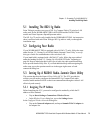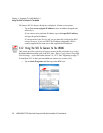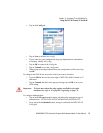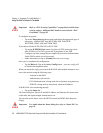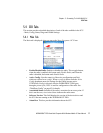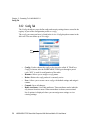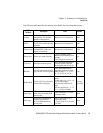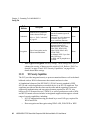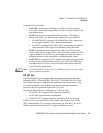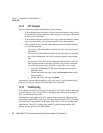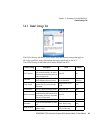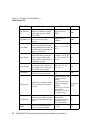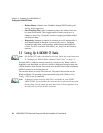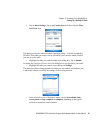
Chapter 5: Connecting To A LAN With 802.11
Config Tab
80 WORKABOUT PRO Hand-Held Computer With Windows Mobile 5.0 User Manual
• EAP-Type & Encryption: Security settings. These settings allow you to
enhance the security of data across the wireless LAN. Refer to “EAP Cre-
dentials” on page 82 and “SCU Security Capabilities” on page 80 for
details about these settings.
5.4.2.1 SCU Security Capabilities
The SCU provides integrated security to protect transmitted data as well as the hand-
held and wireless WAN infrastructure that transmit and receive data.
A foundational element of the IEEE 802.11i WLAN security standard is IEEE
802.1X and a critical application on a mobile device is an 802.1X supplicant. This
supplicant provides an interface between the radio and the operating system and
supports the authentication and encryption elements required for 802.11i, also
known as Wi-Fi Protected Access 2 (WPA2), as well as predecessors such as WPA
and WEP. Summit software includes an integrated supplicant that supports a broad
range of security capabilities, including:
• 802.1X authentication using pre-shared keys or an EAP type, required for
WPA2 and WPA.
• Data encryption and decryption using WPA2 AES, WPA TKIP or WEP.
Credentials
Authentication credentials
for the selected EAP type.
Refer to “EAP Credentials”
on page 82.
User: Username or
Domain/Username (up to 64
characters).
Password: up to 64 characters.
For PEAP: CA Cert–CA
server certificate filename.
None
Encryption
Type of encryption used to
protect transmitted data.
Off, Manual WEP, Auto WEP
(generated during EAP
authentication), WPA-PSK,
WPA-TKIP, WPA2-PSK,
WPA2-TKIP, WPA2-AES,
CCKM-TKIP.
For Manual WEP: Up to four
static WEP keys.
For PSK: ASCII passphrase or
hex PSK.
None
Radio
Attribute
Description Value Default




